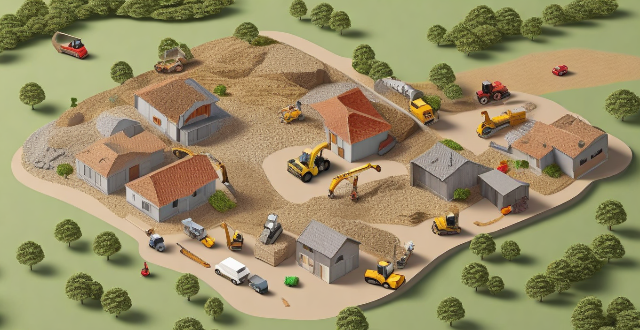An effective emergency response plan for construction sites is essential to ensure safety, minimize damage, and comply with legal requirements. Key components include hazard identification, prevention measures, emergency procedures, recovery strategies, coordination, and legal compliance. Implementation involves training, drills, and regular updates based on feedback and incident debriefing.

Essential Elements of an Effective Emergency Response Plan for Construction Sites
I. Introduction
An effective emergency response plan is crucial for construction sites to ensure the safety and well-being of workers, minimize damage to property, and comply with legal requirements. This plan should be comprehensive, clear, and easily accessible to all personnel involved in the project.
II. Key Components of an Emergency Response Plan
A. Hazard Identification and Risk Assessment
1. Identify Potential Hazards: Analyze potential risks such as fire, explosion, structural collapse, or natural disasters.
2. Risk Assessment: Evaluate the likelihood and potential impact of each hazard to prioritize mitigation efforts.
B. Prevention Measures
1. Safety Training: Regularly train employees on safety protocols and emergency procedures.
2. Equipment Maintenance: Ensure all machinery and equipment are properly maintained to prevent accidents.
C. Emergency Procedures
1. Evacuation Plan: Detailed instructions on how and where to evacuate in case of emergencies.
2. First Aid Procedures: Clear guidelines for providing immediate medical assistance.
3. Communication System: A reliable system to alert personnel and communicate during emergencies.
D. Recovery Strategies
1. Temporary Accommodations: Arrangements for temporary shelter if necessary.
2. Repair and Restoration: Plans for repairing damaged structures and restoring operations.
E. Coordination and Collaboration
1. Contact Information: List of emergency contacts including local authorities, hospitals, and utility services.
2. Collaboration with Local Authorities: Establish relationships with emergency services for quick response times.
F. Legal Compliance
1. Regulatory Requirements: Ensure the plan complies with local, state, and federal regulations.
2. Documentation: Keep records of training sessions, drills, and updates to the plan.
III. Implementation and Testing
A. Training and Drills
1. Regular Drills: Conduct regular emergency drills to familiarize workers with procedures.
2. Feedback Mechanism: Collect feedback after drills to improve the plan continuously.
B. Updating the Plan
1. Periodic Reviews: Review and update the plan regularly based on changing conditions or new regulations.
2. Incident Debriefing: Analyze any incidents that occur to refine future responses.
IV. Conclusion
An effective emergency response plan is a living document that requires continuous evaluation and updating. By incorporating these essential elements, construction sites can significantly enhance their ability to manage and respond to emergencies, ensuring the safety of everyone involved.